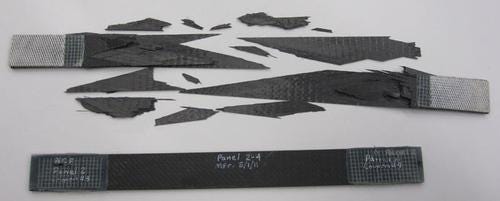February 23, 2012

An international consortium led by the Stanford University composites pioneer Dr. Stephen Tsai has developed a new type of carbon-fiber composite. The thin-ply, bi-angle, noncrimp fabric, which uses a nonwoven fabric architecture, delivers more than three times the tensile strength of conventional woven carbon-fiber fabrics and resin infusion methods.
The consortium includes Stanford's Department of Aeronautics and Astronautics, Chomarat Textiles Industries, Advaero Technologies, NASA Marshall Space Flight Center, the composite component manufacturer VX Aerospace, and the aerospace carbon-fiber and composite materials maker Hexcel. Materials developed based on this technology will target industries that need lightweight, high-strength structures, especially aerospace manufacturing.

Greg Bowers, co-founder, president, and CEO of Advaero, told us his company has completed initial trials of the new composite. It is produced using Chomarat's newly developed 150 gsm bi-angle, noncrimp carbon fabric, which is infused with resin using Advaero's HVARTM (heated vacuum-assisted resin transfer molding) process. This process is more cost-effective than the energy-intensive high-pressure autoclave ovens conventionally used to produce carbon-fiber composites, Bowers says.
Dr. Ajit Kelkar, professor and chairman of nanoengineering at North Carolina A&T State University's Joint School of Nanoscience and Nanoengineering, co-invented HVARTM. "Typically, carbon-fiber composites for aerospace applications are very strong in one direction but weak in other directions," he told us. "To balance their strength, they have to be reinforced. That's why composites are manufactured with layers oriented in different directions stacked together. If you don't, the composites will warp and bend."
About the Author(s)
You May Also Like



